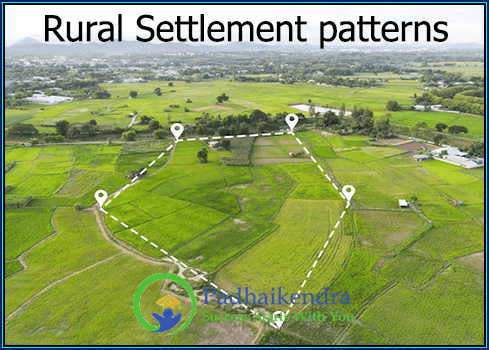Rural settlement patterns can be classified into two main categories: geometrical and non-geometrical patterns.
Geometrical patterns are those that follow a specific geometric shape or form. These patterns are often seen in planned communities or those that have been developed with a specific purpose or function in mind.
The most common geometrical patterns include the linear, cross-shaped, and grid patterns.
The linear pattern is characterized by settlements arranged in a line along a road, river, or other transportation route. This pattern is often seen in areas with narrow valleys or steep terrain. The cross-shaped pattern is characterized by a central intersection of two main roads, with houses and buildings located at the four corners of the intersection. This pattern is often seen in areas with flat terrain or where two main roads intersect. The grid pattern is characterized by a series of parallel and perpendicular roads that create a grid-like pattern of rectangular or square blocks. This pattern is often used in planned communities or towns that have been designed with a specific purpose or function in mind.
Non-geometrical patterns, on the other hand, do not follow a specific geometric shape or form. These patterns are often seen in rural areas that have developed organically over time, without a specific plan or design in mind.
The most common non-geometrical patterns include the nucleated, dispersed, and clustered patterns.
The nucleated pattern is characterized by settlements that are clustered together in a compact settlement. This pattern is often seen in areas with fertile land, good water sources, and mild climate. The dispersed pattern is characterized by settlements that are spread out over a large area. This pattern is often seen in areas with rugged terrain or limited water sources. The clustered pattern is characterized by settlements that are grouped together in clusters or small villages. This pattern is often seen in areas with hilly terrain or where there are natural boundaries that define the limits of settlement.
Overall, both geometrical and non-geometrical patterns are important in understanding rural settlement patterns and their development over time.





